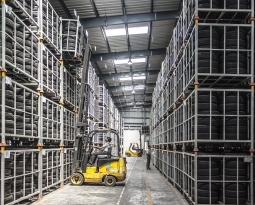New York Patent of the Month – April 2024
Spheryx, Inc. is building particle characterization technology for use in nearly any industry – from water quality to semiconductor manufacturing. The company’s Total Holographic Characterization® has recently been granted a patent and aims to deliver solutions that provide a new window into suspensions at the sub-visible level.
The technology brings unprecedented precision and efficiency to the analysis of particles in fluid mediums. This innovative approach involves dispersing a mixture of known and unknown particles within a fluid medium, then flowing this mixture through an observation volume of a holographic microscope.
By generating holographic images based on video microscopy, Spheryx captures the intricate details of particle interactions within the observation volume. The first holographic image is analyzed for regions of interest corresponding to specific particles. Through a series of steps involving normalization and fitting to light scattering theory, the method accurately characterizes the refractive index of the particles, shedding light on their properties.
What sets Spheryx’s method apart is its applicability to a wide range of particles, including porous and irregularly shaped ones. Traditionally, holographic microscopy was limited to analyzing spherical particles, but Spheryx’s approach extends its capabilities to materials with diverse shapes and compositions.
One remarkable aspect of Spheryx’s method is its ability to compare refractive indices between different particles, enabling the characterization of entire groups of particles based on these comparisons. This holistic approach to particle analysis opens up new avenues for understanding complex materials and their behavior in various environments.
The applications of this technology are vast, spanning industries from pharmaceuticals to semiconductor processing. With its ability to provide precise measurements and insights into particle properties, Spheryx’s method promises to drive innovation and advance research in countless fields.
Are you developing new technology for an existing application? Did you know your development work could be eligible for the R&D Tax Credit and you can receive up to 14% back on your expenses? Even if your development isn’t successful your work may still qualify for R&D credits (i.e. you don’t need to have a patent to qualify). To find out more, please contact a Swanson Reed R&D Specialist today or check out our free online eligibility test.
Who We Are:
Swanson Reed is one of the U.S.’ largest Specialist R&D tax advisory firms. We manage all facets of the R&D tax credit program, from claim preparation and audit compliance to claim disputes.
Swanson Reed regularly hosts free webinars and provides free IRS CE and CPE credits for CPAs. For more information please visit us at www.swansonreed.com/webinars or contact your usual Swanson Reed representative.

















